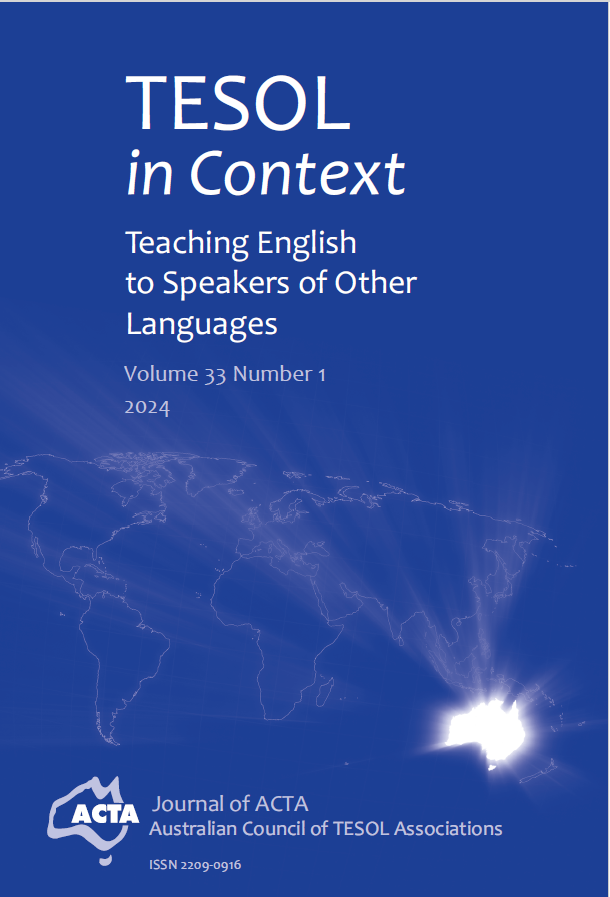Expanding teacher understanding of scaffolding for multilingual learners using a language-based approach to content instruction
DOI:
https://doi.org/10.21153/tesol2024vol33no1art2008Abstract
Scaffolding ensures multilingual learners (ML) are adequately challenged and supported at school while learning English and subject area content. Due to the dynamic nature of language development, teachers may struggle to anticipate how to adequately scaffold lessons or reflect on their practice to identify areas for improvement. This paper examines how nine middle and secondary teachers across different content areas expanded their understandings of scaffolding for MLs. Using qualitative case study methods, data were collected through M.S. Ed. in TESOL coursework incorporating a Language-Based Approach to Content Instruction (LACI). LACI emphasizes teaching content through language, ensuring MLs access grade-level content while supporting language development. Data sources include major course assignments: (a) a designed lesson plan and reflection of the taught lesson, and (b) a video-based observation of a lesson. Both assignments incorporated the six Cs of Support (namely, a means of scaffolding based on LACI). Findings indicate that teachers deepened their understanding of scaffolding in general and in relation to the six Cs of Support for MLs. This study anticipates how teachers approach, expand upon, and apply their understandings of scaffolding practice, offering insights and implications for teacher educators to enhance how scaffolding is presented in coursework with a focus on MLs.
Metrics
Downloads
Published
Issue
Section
License
Copyright (c) 2024 TESOL in Context

This work is licensed under a Creative Commons Attribution-ShareAlike 4.0 International License.






